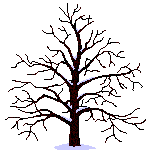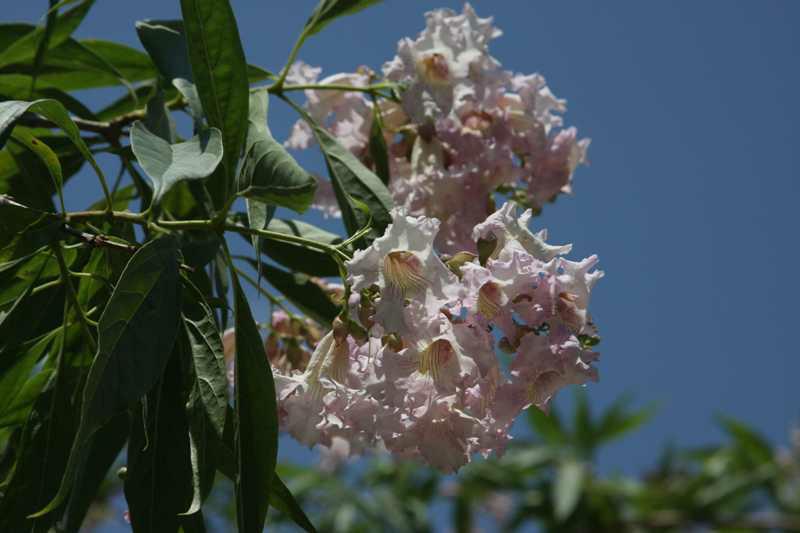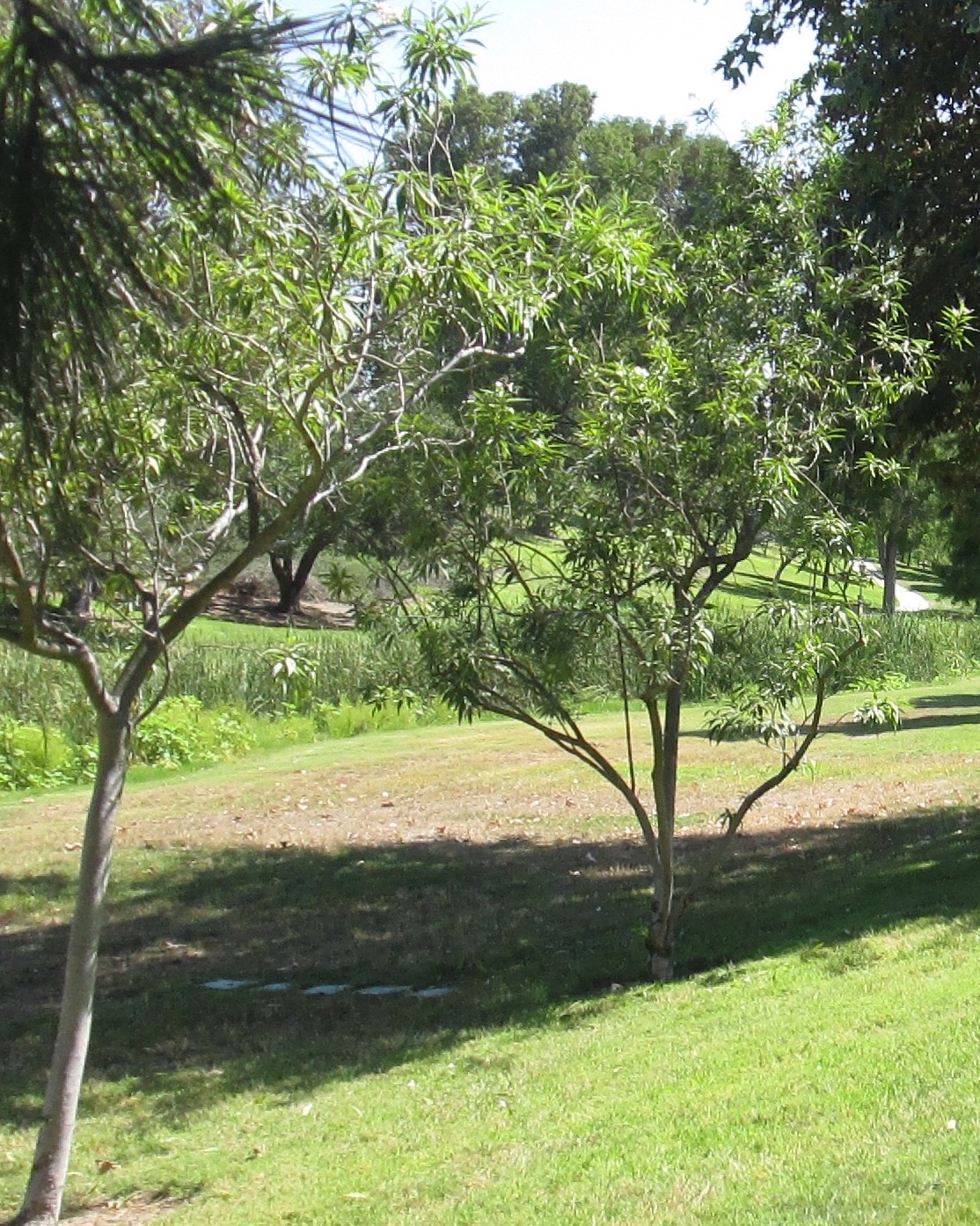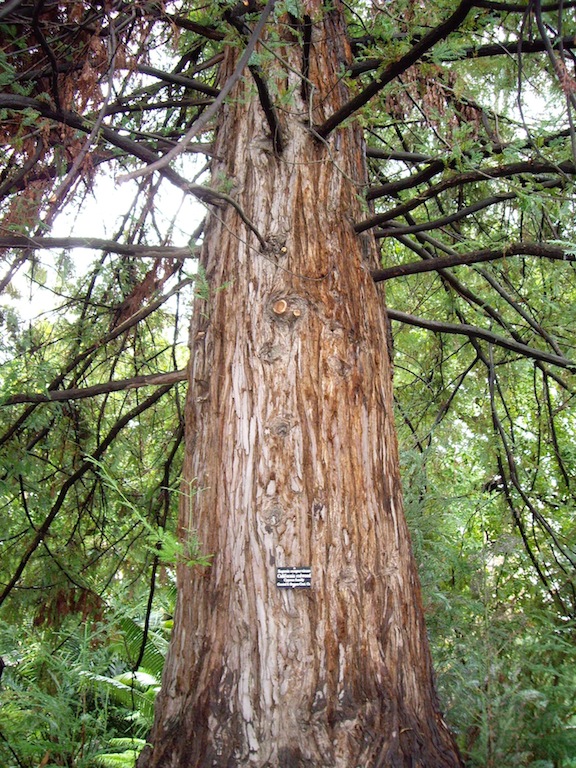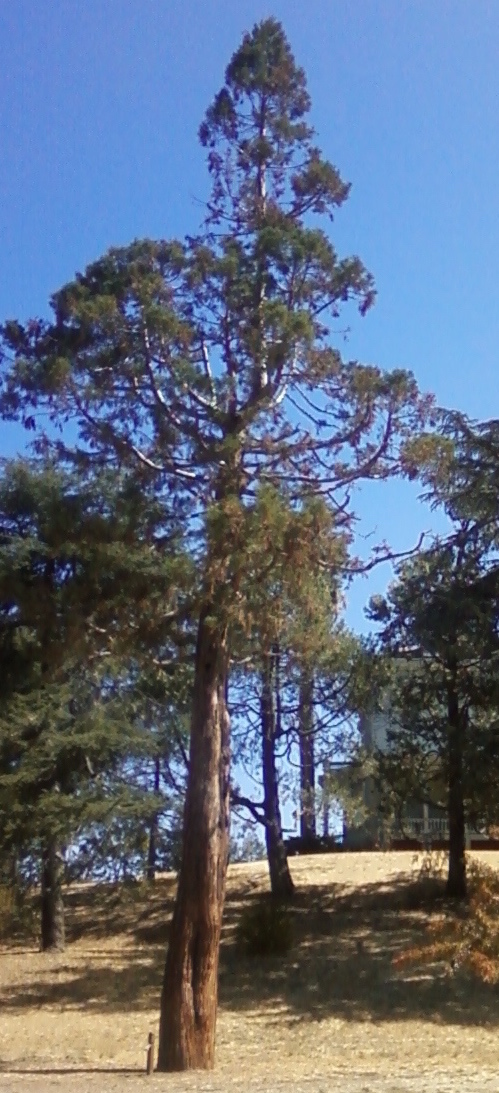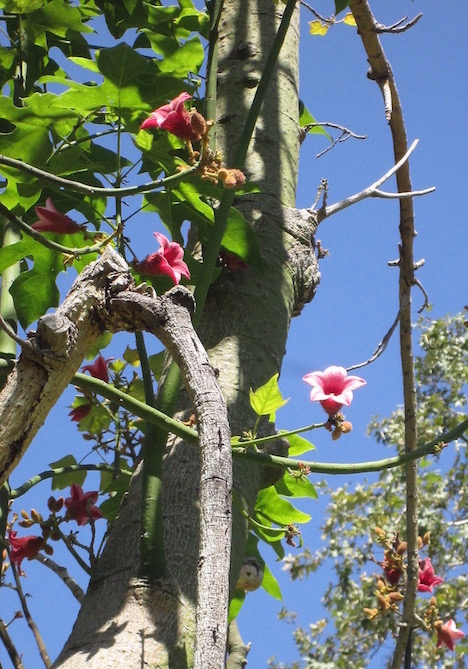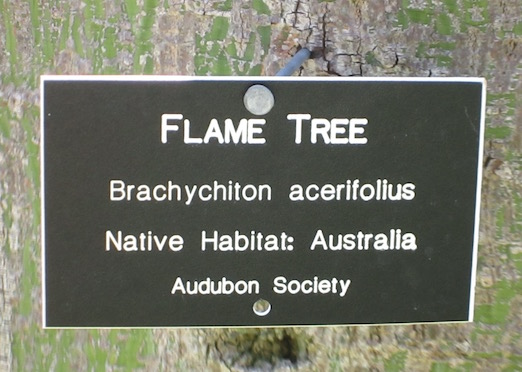Trees of these woods.
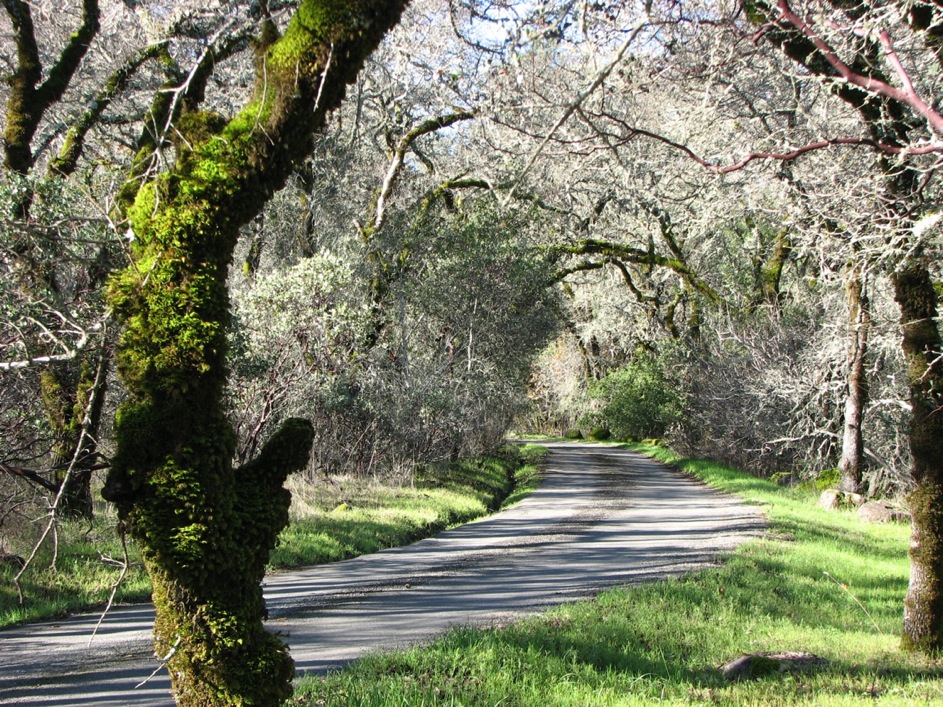
Our woods are collections of mostly pines some rare breeds worldwide, and California natives.
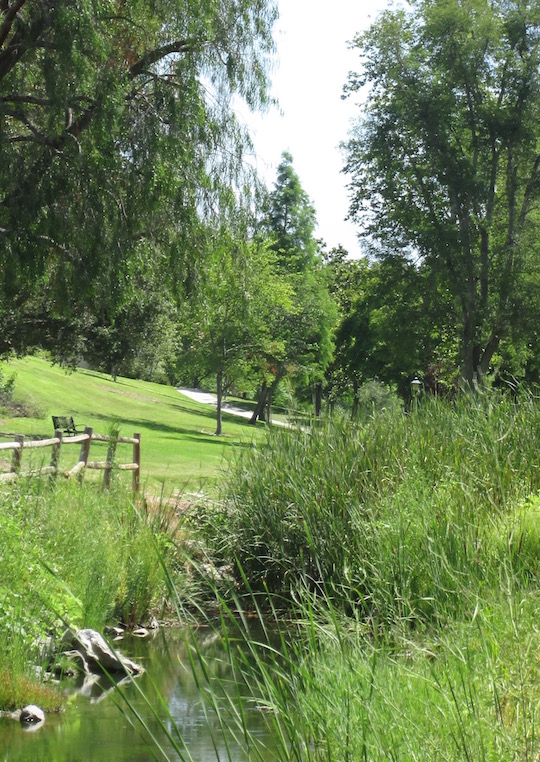
Aliso Creek is a significant watershed flowing from the Santa Ana Mountains to the Pacific ocean.
1-22-17 flood waters on Aliso Creek at the big, Old Sycamore:
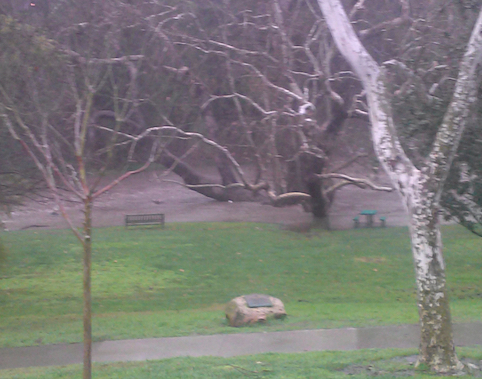 Trees hold terrains despite the erosive waters' relentlessly sculpting force.
Trees hold terrains despite the erosive waters' relentlessly sculpting force.
You need trees for violins to sound so well.
Platanus racemosa
The California Sycamore in our creek bed is said to date from the 1580s.

These western Sycamore trees are some "of the few trees to shade the lowlands of coastal Southern California. When the Spanish first encountered them, the trees escaped easy classification. Mistaken for another tree, they became known as alisos, the Castilian word for alders."
KCET - Lost Los Angeles: "The Sycamores of Southern California: A Brief History."
Nathan Masters, June 20, 2013.
Chitalpa tashkentensis
Called "pink dawn" this deciduous, shade tree is an example of an inter-generic hybrid first hybridized in Tashkent, Uzbekistan in the 1960s & to U S A in 1977.
Shown is the spring bloom of this inter-generic hybrid that is a
rapid-growing, deciduous tree –shown here in Aliso Creek– that is a cross between desert willow (Chilopsis linearis) and southern catalpa (Catalpa bignonoides).
Missouri Botanical Garden
Sequoia sempervirens
Redwood forests are among the great features of some coastal mountainsides and high, interior valleys where stream sources for water are more dependable than are the sun-exposed slopes.
The coastal redwoods and their cousins the giant Sequoia of the Sierra Nevada mountains are fabled forests due to their antiquity, size and performance under duress of cold, periodic drought-resistance and rain-soaked winters. Despite the age of these giant plants, the IUCN has classed the species as endangered. "Continuing decline" in the species is evidenced by the facts that "According to forestry estimates in Burns and Honkala (1990) there remained by the end of the twentieth century a total of 260,200 ha of commercial forest with 'more than 50% redwood stocking', while a further 80,940 ha was ‘old-growth redwood’ mostly within protected areas."
IUCN: List of Threatened Species
These forests are called: Redwood, Coast Redwood, California Redwood.
John Muir planted this tree [photograph above] in the 1890s in Martinez from a seed found in a Sequoia grove he frequented in the Sierra Nevada Mountains. It is a relative of the coastal Redwood and is called the giant Sequoia – Sequoiadendron giganteum (Linda.) J.T. Buddles which according to the IUCN is "declining." While all trees are indictor species, the IUCN scientists find these particular S. giganteum forests to "indicate rather narrow climatic and soil conditions that are optimal in its natural habitat." The justification for endangered species concern is that "Most groves are on granite-based residual and alluvial soils, some on glacial outwash, and mildly acidic; best growth is on deep, well-drained sandy loams with available ground water, . . . " Muir's foresight in planting the tree though he was to die within two decades of its sprouting is but one demonstration of the hope inherent in an authentic meaning of conservation.
"The present trend in recruitment of Sequoiadendron giganteum is downwards, due to competition in the absence of periodic fires in many of the protected groves."
Tucker Wildlife Sanctuary & Nature Center
These worldwide specimens in our woodlands are exotic.

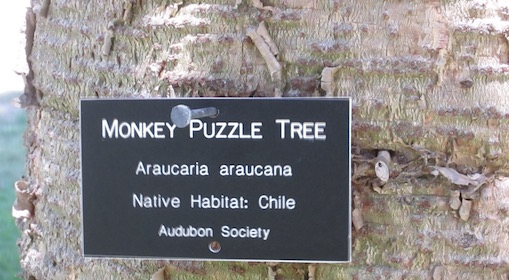
![]()
Natural History of Orange County, California
Specimens from my lost gardens.
Bishop pines among maritime forest trees: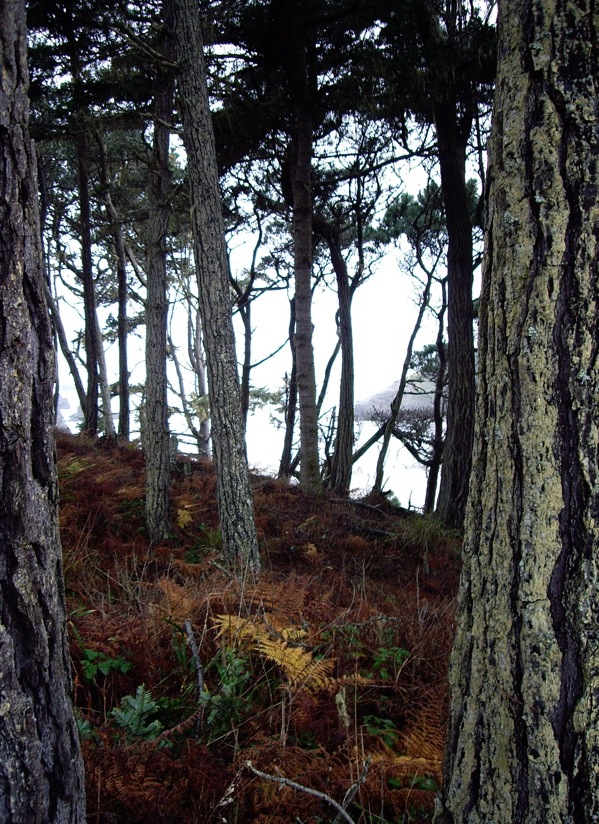
This forest in Mendocino County provides a path into the lost geological past.
Fraxinus uhdei (Wenzig) Lingelsh

Shamel Ash, Fraxinus uhdei (Wenzig) Lingelsh, right of the walkway.
The Shamel Ash tree, or Mexican Ash and the Oregon {Fraxinus latifolia} Ash are common in California, although the Shamel Ash is native to Central America and Mexico.
Plant Characteristics: Dioecious evergreen to semi-evergreen tree, in mildest areas leaves stay through the winter; in colder sections, trees lose most or all foliage, but often for only a short time; grows fast to 25-35 ft. in 10
Habitat: Introduced from Mexico. Blooms in early spring.
Name: Latin, fraxinellas, the ash tree. (Jaeger 105). Uhdei, John Johnson feels that howdy is named for a person. The name means of Uhde.
General: Uncommon in the study area with a few specimens around Newport bay. University of California Irvine
Indians used Fraxinus latifolia, the Oregon Ash, for tobacco, pipes, canes, harpoon shafts and made medicine from the roots. (Coon 245). The wood is used for baseball bats, shovel handles and other tools. (John Johnson).
Ash trees, Fraxinus, spp., were popular for a lot of reasons, one of them being an ear remedy.Fraxinus, species have been known to cause hay fever and asthma. (Fuller 381).
About 65 species of deciduous trees mostly native in the north temp. zone, valuable as street and park trees. (Bailey 799).
Text Ref: Bailey 799; Sunset Editors, New Western Garden Book . 1984, 303.
Ulmus parvifolia,
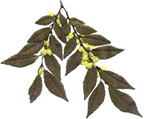 has been commonly known as the Chinese elm.
has been commonly known as the Chinese elm.
The Ulmus parvifolia is not a native tree yet is "noted for its excellent foliage, multi-colored bark, rapid growth and good resistance to Dutch elm disease. Insignificant, small, reddish-green flowers appear in late summer. Flowers give way to single-seeded wafer-like samaras which are tiny seeds surrounded by a flattened circular papery wing that mature in fall.
Chinese elm has good resistance to Dutch elm disease, a fatal fungal disease spread by airborne bark beetles. It also has good resistance to Japanese beetle and elm leaf beetle.
The trees have flaking bark with many colors, including light gray, red and white."
Finding California Flora or plants consult – https://www.calflora.org.
Vincent Van Gogh painted The Mulberry Tree in October of 1889.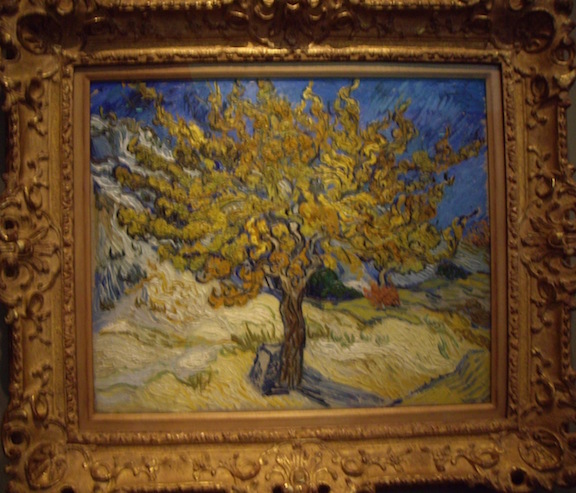
Photo Ref: Mar-May 90 # 1,6,7,8,9,10; February-April 91 # 5.
Identity: by John Johnson.
First Found: April 1990.
Computer Ref: Plant Data 086.
Plant specimen donated to UC Riverside in 2004.
Last edit 8/7/05.
California Academy of the Sciences

